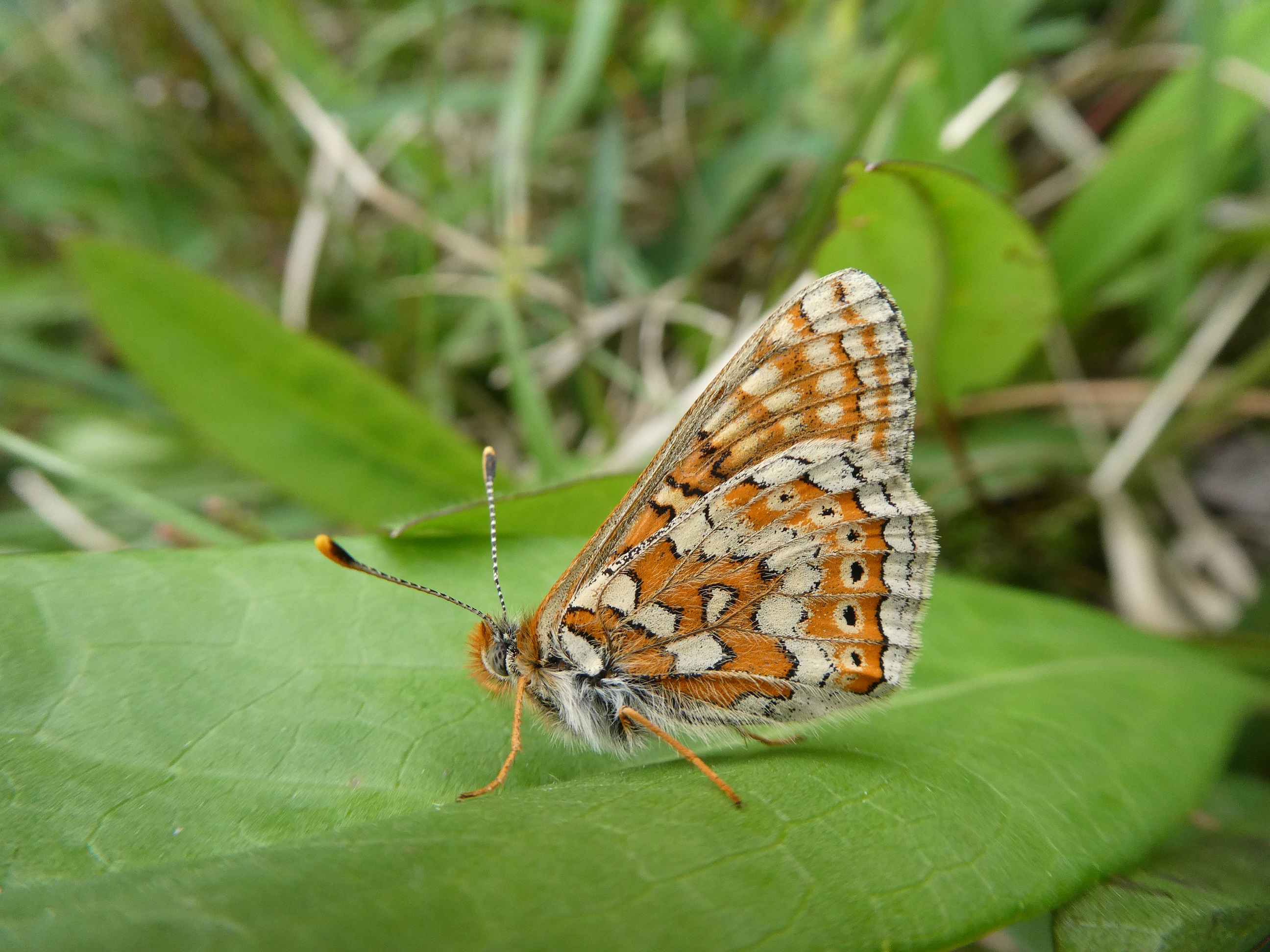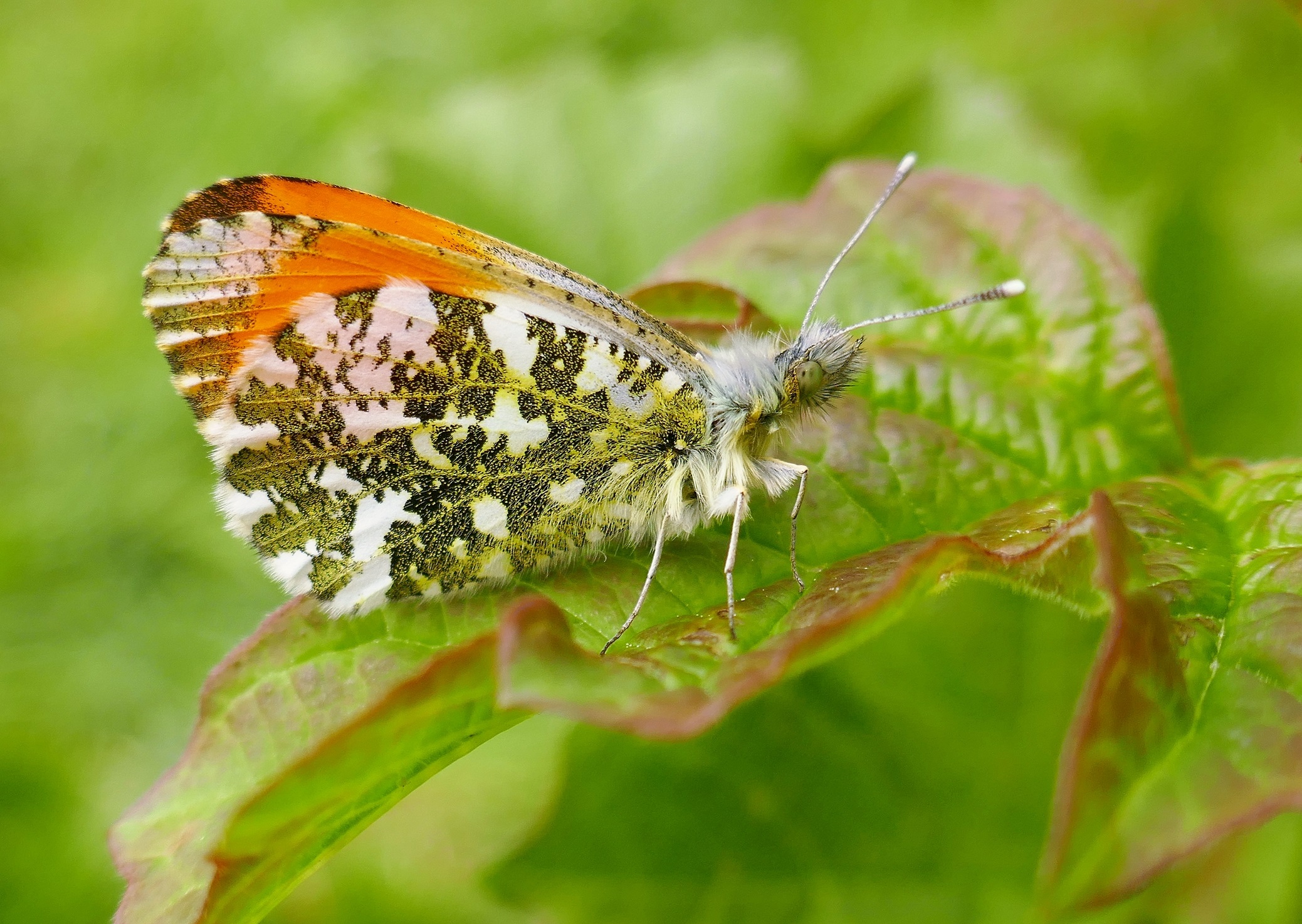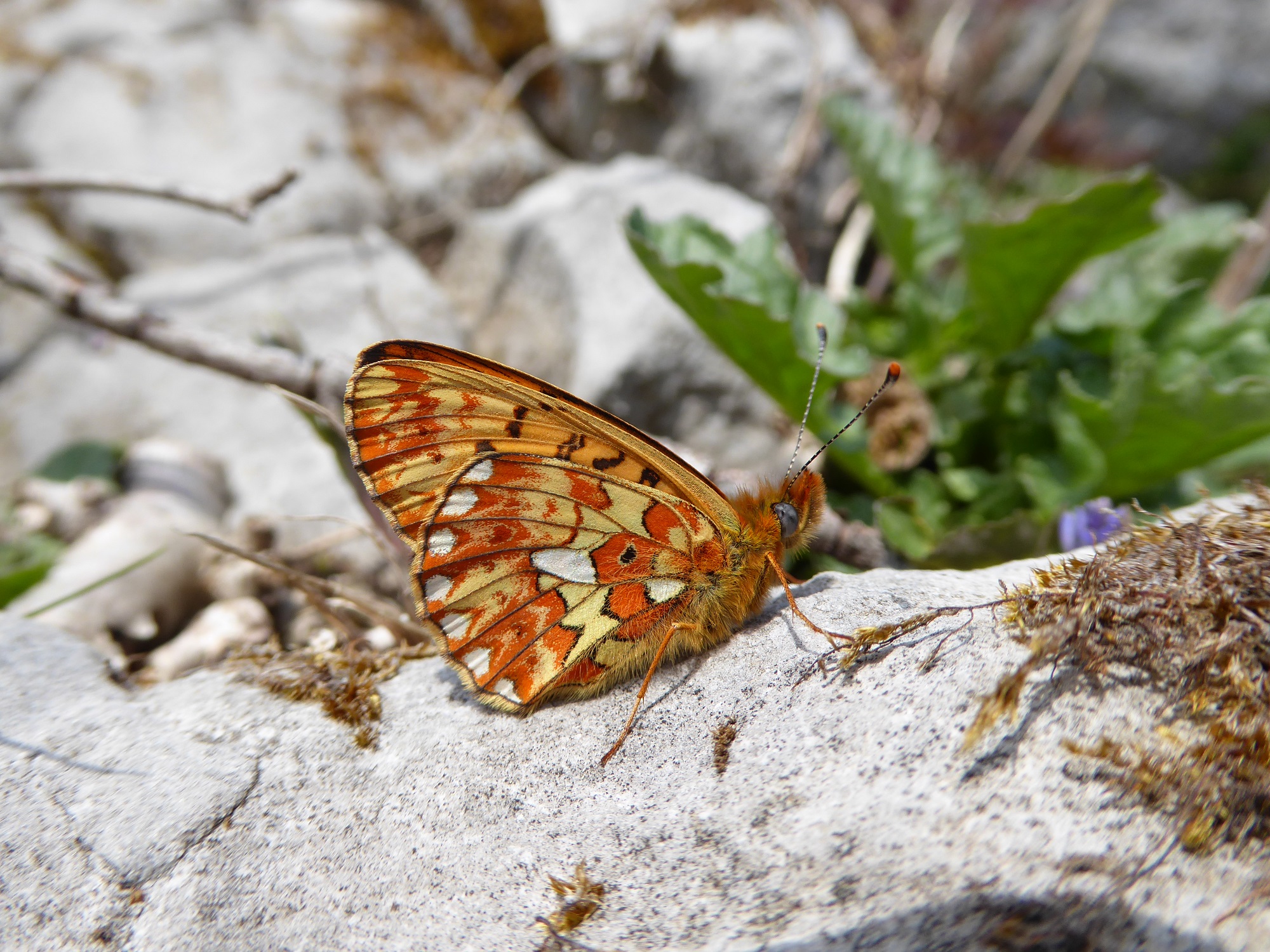Last August we reported the latest information concerning the state of Ireland’s butterfly populations. The picture painted by the Irish Butterfly Monitoring Scheme data for 2020 and 2021 was not positive, with no species showing positive trends in 2021 with only two, the Brimstone and Peacock, showing a stable trend since 2008, the baseline year. The most recent data from the UK is now available.
In this article, we present the overall data for the UK report, the data for some of the species found in both the UK and Ireland, and comment on the findings.
Key findings of “The State of the UK’s Butterflies 2022”
In the UK, long-term trends show that 80% of butterfly species have decreased in abundance (the number of butterflies) or distribution (the areas where butterflies occur), or both since the 1970s. By comparison, 56% of species increased in one or both trends. These findings are very similar to the headline results of the previous assessment in 2015. As then, the report finds that there are winners and losers but, on average, UK butterflies have lost 6% of their total abundance at monitored sites and 42% of their distribution over the period 1976-2019. Considering only the changes that assessors have most confidence in (those that are statistically significant), almost twice as many UK species have decreased in at least one measure than have increased: 61% have decreased and 32% increased.
Most habitat specialist species, (species restricted to particular habitats such as flower-rich grassland, heathland and woodland clearings), have declined dramatically in the UK. As a group, their abundance has decreased by over one-quarter (-27%) and their distribution by over two-thirds (-68%) since 1976 (1976 is the baseline year used for UK butterfly monitoring; in Ireland, it is 2008). Wider countryside species, butterflies that can breed in the farmed countryside and in urban areas, have fared less badly, although as a group they have decreased since 1976 (-17% in abundance and -8% in distribution).
Multi-species indicators provide an overall summary of changes in either abundance or distribution by combining species-level indices for groups of butterflies sharing particular attributes. The report authors constructed abundance and distribution indicators for all butterfly species (including the common migrants), and separately for resident species classified as habitat specialists or wider countryside species, at the UK level and for each of the UK countries, where there were sufficient data. Multi-species indicators for abundance and distribution were also produced for Butterfly Conservation’s Priority Species at the UK level.
Multi-species distribution indicators at UK and country levels were also constructed by combining occupancy indices in three ways: for all species, for habitat specialists and for wider countryside butterflies.
Long-term UK abundance trends
Analysing the standardised count data from the UKBMS generated long-term trends for 58 species. UKBMS is the UK Butterfly Monitoring Scheme. It uses data gathered from transect walks, which uses the same methodology used by the Irish BMS in which recorders walk a fixed route (transect) in good weather each week from 1 April to 30 September and count every butterfly in an imaginary 5m box. Overall, more species decreased than increased in abundance: 30 species (52% of the total) had negative trends and 28 species (48%) positive trends. The statistical significance of trends provides a measure of the confidence that we should place in the changes they show. We can be much more certain that species with statistically significant trends have genuinely changed in abundance, irrespective of how large or small the change is. The UK long-term trends show that 19 species (33% of the total) have decreased significantly in abundance, 15 species (26%) have increased significantly and 24 species (41%) have non-significant trends. Only slightly more species decreased in abundance than increased at UKBMS-monitored sites. This represents a small improvement in the fortunes of UK butterflies compared to the previous assessment in 2015, when 36% of species with long-term abundance trends had decreased significantly and 23% had increased significantly.
Long-term UK Distribution Trends
Occupancy modelling of Butterflies for the New Millennium (BNM) species occurrence records was used to produce long-term UK distribution trends for 58 species. This method uses non-standardised recording, where recorders log any life cycle stage of any butterfly species, anywhere in the UK on any day of the year. This flexibility encourages large numbers of contributors leading to very widespread coverage of the UK landscape every year. This is the same system used by Butterfly Conservation Ireland’s recording scheme; see https://butterflyconservation.ie/wp/records/.
Overall, 43 species (74%) had negative distribution trends and 15 species (26%) positive trends. Far more species have decreased in distribution than have increased. The same pattern is found just for those species with statistically significant distribution trends: 30 species (52% of the total) had significant decreases in distribution, eight species (14%) significant increases and 20 species (34%) showed changes in distribution that were not statistically significant. Nearly four times as many species have decreased significantly in distribution as have increased. The occupancy modelling approach used differs from that in the 2015 assessment, so a direct comparison is less valid than for the abundance trends. However, fewer species show significant distribution trends (both decreases and increases) now compared to the 2015 report.
Combined Assessment (Abundance and Distribution)
Considering just the statistically significant trends, 36 species (61%) had decreased significantly in one or both trends and 19 species (32%) had increased significantly in one or both. Almost twice as many species had a significant negative trend in at least one measure than had a significant positive trend in one or both.
Although it remains widely distributed, mainly around the UK coastline, there is increasing concern about Grayling, which has suffered a severe long-term decline. Since 1976, the abundance of this species has decreased by 72% and its distribution by 92% at the UK level, and with major declines in both measures in England, Scotland and Wales. The data from Northern Ireland was insufficient to produce trends. These ongoing, rapid declines recently led to Grayling being upgraded from Vulnerable to Endangered on the GB Red List. Dependent on fine leaved grasses growing in sparse vegetation with much open ground or rock, the butterfly faces threats from habitat degradation due to ecological succession and nitrogen deposition, and from consequent small population size and increasing isolation.
The trends for Large Heath, another Priority Species, provide a positive picture, with a very large (407%) increase in abundance at monitored sites and little change in distribution (-2%) since the 1990s. Although present in all four UK countries, the remote location of most colonies means that few are monitored, and data are only sufficient to produce a UK-level abundance trend. Many of the monitored sites are managed for biodiversity and Large Heath populations have benefitted, for example from peatland restoration on lowland bogs in Scotland. However, there are concerns elsewhere in its range. For example, at some sites on the North York Moors and in Northumberland, there has been a substantial reduction in the amount of cottongrasses, the Large Heath’s larval foodplants, perhaps due to climate change. In many other areas, particularly in the uplands, data on how the butterfly and its habitats are faring are lacking.
Marsh Fritillary is the focus of conservation efforts in all four UK countries. Its distribution has decreased by 43% since 1985.

The report then focussed on the individual countries in the UK.
England
In England Wood White has decreased by 82% in abundance (1979-2019) and by 77% in distribution (1992-2019), is classed as Endangered on the Red List and is a Priority Species for Butterfly Conservation. Most of the long-term abundance decline took place during the 1980s and recent signs are more positive, thanks to intensive conservation efforts in many parts of the Wood White’s range.
Northern Ireland
The multi-species indicators for Northern Ireland’s butterflies show decreases of 17% in abundance (2006- 2019) and 10% in distribution (1993-2019). However, only about half of the resident and regularly breeding butterfly species in Northern Ireland had sufficient data to calculate long-term trends up to 2019, so these indicators are not necessarily representative of all butterflies. In particular, habitat specialist species that are of conservation concern in Northern Ireland, such as Large Heath, Small Blue and Dingy Skipper do not, as yet, have sufficient monitoring coverage to produce trends. (The Small Blue and Dingy Skipper have highly restricted distribution in Northern Ireland, especially the Small Blue.)
The Wall butterfly has suffered a precipitous decline in Northern Ireland and appears to be on the verge of extinction. Formerly found in all six counties, a rapid decline since the 1990s reduced the species to the coastline of Co. Down, where there were only three records in the period 2015-2019. A single Wall was also seen in 2021, so the species is still clinging on. The cause is not known with any certainty, but the decline mirrors that experienced by Wall in England and Wales, where it is also among the most severely declining butterfly species, and in other parts of Europe.
Small Heath is another species, like Wall, which is associated with short, sparse turf, and which has undergone a rapid distribution decline (40% decrease 1995-2019) in Northern Ireland. Indeed, Small Heath has decreased significantly in all four UK countries. Loss and deterioration of habitat seem the most likely drivers of this decline, with factors such as climate change and nutrient pollution stimulating greater vegetation growth resulting in longer, denser swards even on sites managed for biodiversity. Small Heath caterpillars fail to survive on grasses when fertilizers are applied at the levels typically used in intensive agriculture, which suggests that the species may also be harmed away from farmland by smaller amounts of atmospheric nitrogen pollution.
Dingy Skipper declined by 15% in abundance and 35% in distribution 1976-2019.
Orange-tip declined by 26% in abundance and 1% in distribution 1976-2019.
Small Copper declined by 39% in abundance and 37% in distribution 1976-2019.
Small Tortoiseshell declined by 79% in abundance, but its distribution increased slightly up 0.2% 1976-2019.
Comma increased by 203% in abundance and 94% in distribution 1976-2019.
Silver-washed Fritillary increased by 284% in abundance and 1% in distribution 1976-2019.

Regarding Cryptic Wood White Butterfly Conservation UK’s new analyses provide a more optimistic picture with nonsignificant trends suggesting an increase in abundance over the past decade and a stable distribution trend from 1993-2019. Unlike Wood White, which is mainly a woodland species in the UK, Cryptic Wood White uses more open habitats such as grasslands, and colonies are at risk from urban development and agricultural intensification. Other species that appear to be experiencing recent upturns in their fortunes, even if data are currently insufficient to demonstrate it quantitatively, include Dark Green Fritillary, Silver-washed Fritillary and Holly Blue. All three appear to be continuing to expand across Northern Ireland, where suitable habitats exist.
Discussion
There are strong similarities in the population declines and increases seen in the UK and the Republic of Ireland. Looking at the species that occur across these islands that are under pressure, most are species that occur on grassland. Grayling, Gatekeeper, Small Heath and Wall breed on grasses, which are almost certainly being affected by agriculture and industry adding nitrates to soils. This is being done directly, by the application of fertilisers and indirectly, by nitrates arising from farming, nylon manufacture and burning fossil fuels deposited from the atmosphere on soils, either in precipitation or as trace gases and particulate matter. There is good evidence that this is poisoning larvae feeding on nitrogen-enriched foodplants and cooling the temperature around the foodplant, which prevents or slows larval development. There is evidence that some non-grass feeders, like the Small Copper, which breeds on sorrels, are poisoned by fertiliser uptake by the foodplant.
The fact that declines are noted in areas where there is no agricultural activity suggests atmospheric pollution. There is very little farming activity along the Dublin coastline, and the Grayling and Wall are extremely rare on the coastal dunes where they used to be abundant and well distributed.
Quite concerning is the information from Department for Environment, Food and Rural Affairs (DEFRA) that the largest amounts of wet deposition inputs of nitrate (NO3–) and ammonium (NH4+) (deposited from the atmosphere by rain and snow) are found in the uplands of Wales, northern England and western Scotland, away from industrial areas.
Nitrogen transformation and plant uptake of mineral nitrogen involve the production and consumption of protons and can, therefore, contribute to soil acidification. Where this occurs, plants that occur only or chiefly on alkaline soils, such as Kidney Vetch and Common Bird’s-foot-trefoil, may disappear, impacting on butterflies that breed on calcicoles (plants that need lime-rich soil), such as Small Blue and Common Blue.
There is also evidence that the poor recovery of sensitive species of Sphagnum moss in the southern Pennines (Lancashire and Yorkshire) is largely due to toxicity of ammonia NH4+ and nitrate NO3– deposition. Loss of moss and lichen species in Cumbria over the past 30-40 years may also be due to increased nitrogen deposition over that period. This has implications for the health of our bogs, and for the Large Heath which relies on peat bogs for its survival.
The loss of Marsh Fritillary populations in the UK appears to be due to loss of habitat. This is where habitat is simply removed by agricultural intensification such as ploughing and reseeding. Habitat loss is also taking place in Ireland, where land drainage, agricultural ‘improvement’ and afforestation is taking a toll, but natural succession, where scrub and woodland is developing on grassland no longer grazed, and on cutaway bogs where machinery disturbance has ceased and scrub develops, is also resulting in habitat loss.
There is some good news. The Small Tortoiseshell, its abundance in decline in the UK (-79%), appears less affected here. Between 2008 and 2021, it declined in abundance by 49%. A new enemy, Sturmia bella, a parasitoid fly that colonised Britain from the continent has affected Small Tortoiseshell populations. This fly has not been recorded here, but it is possible that Irish and British (but probably not Northern Irish) populations are being reduced in abundance by drought conditions that force the butterfly to enter hibernation in mid-summer and cancel a second generation typically seen in September.
Better news is the advance of the Silver-washed Fritillary, thriving in new woods developing on cutaway bogs and abandoned farmland. This handsome butterfly increased in abundance in the UK but has not notably risen in distribution there; it has, it appears, always been more widely distributed in Ireland.
The Comma is thriving in the UK. It is one of the outstanding successes there, and it is rapidly expanding its distribution here, having begun its colonisation of Ireland in the early 2000s. The Comma appears to be benefiting from the warming climate and may also be thriving on nitrogen-enriched Stinging Nettles, its main larval foodplant. We now know that it is double-brooded in Ireland, and this may be boosting its colonisation.

The story of the fate of our butterflies is a developing narrative, with diverging fortunes for the cast of characters that comprise our butterfly fauna. Unless we continue to monitor our populations, we will lose the thread of the plots, and may lose our focus altogether. Having some very rare species, like the elegant Pearl-bordered Fritillary, which occurs only in parts of the Burren, we need to maintain our monitoring and conservation focus. The UK has seen a decline of 64% in abundance and a disastrous 88% in the distribution 1979-2019. A leading butterfly scientist, Professor Jeremy Thomas, commented in 2010: “Unbelievably for entomologists of my generation, the butterfly is extinct in Dorset, Kent and Somerset…reduced to single sites in Surrey and Gloucestershire.” In Ireland, the Pearl-bordered Fritillary only occupies ten 10 km squares. We cannot such losses to happen here.
References
Fox R, Dennis EB, Purdy KM, Middlebrook I, Roy DB, Noble DG, Botham MS & Bourn NAD (2023) The State of the UK’s Butterflies 2022. Butterfly Conservation, Wareham, UK. Available at https://butterfly-conservation.org/sites/default/files/2023-01/State%20of%20UK%20Butterflies%202022%20Report.pdf
Harding, J. (2021) The Irish Butterfly Book. Privately published, Maynooth.
Judge, M and Lysaght, L. (2022), The Irish Butterfly Monitoring Scheme Newsletter, Issue 14.
Nash, D., Boyd, T. and Hardiman, D. (2012) Ireland’s Butterflies a review. Dublin Naturalists’ Field Club, Dublin.
Thomas, J. and Lewington, R. (2014) The Butterflies of Britain and Ireland. (Revised edition) British Wildlife Publishing, Dorset.
https://butterflyconservation.ie/wp/2022/08/29/irelands-butterflies-continue-to-decline/
https://uk-air.defra.gov.uk/assets/documents/reports/empire/acidrain/nitdep.html#:~:text=A%20key%20effect%20of%20N,indicators%20of%20increased%20N%20deposition.

